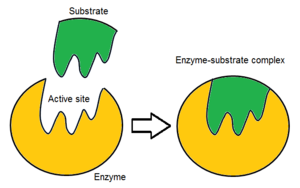The main component of the Cell Membrane.
What is a Phospholipid?
the force within the cell that pushes the plasma membrane against the cell wall
What is turgor pressure
movement of water across the cell membrane
What is osmosis
The products of Photosynthesis.
What is C6H12O6 + 6O2?
The amount of ATP produced in Glycolysis.
What is 2 Net?
the potential of water to move
What is water potential
Random movement of molecules across a membrane from an area of high concentration to low concentration
What is simple Diffusion?
Production of ATP in the presence of Oxygen.
What is Aerobic Respiration?
The organelle that makes Photosynthesis possible.
What is the Chloroplast?
In the Cytosol outside the Mitochondria.
Where does Glycolysis occur?
What is the purpose of the cell membrane?
What is to maintain homeostasis.
property of the membrane that allows some substances to pass through it more easily than others
What is semi permeability
movement that involves direct diffusion through the membrane. It always operates from regions of greater concentration to that of lesser concentration.
What is passive transport
The Chemical formula for Cellular respiration
What is C6H12O6 + 6O2 +ATP --> 6CO2 + 6H2O?
The Chemical formula for Photosynthesis.
What is 6CO2 + 6H2O +light --> C6H12O6 + 6O2?
The amount of ATP produced in the Electron transport chain during Aerobic respiration
What is 32 ATP?
Intravenous (IV) solutions administered to patients are normally isotonic. What is most likely to occur if an IV of distilled water is administered to a patient?
What is the cells exposed to the hypotonic solutions will expand (turgid) as water moves osmotically into the cells from the blood.
Where the substrate attaches to the enzyme

What is the Active site?
movement which involves solute to pass from lower concentration to higher concentration into the cell through the presents of protein carriers
What is active transport
The two types of Anaerobic processes.
What are Alcoholic Fermentation and Lactic Acid Fermentation?
The light absorbing pigment necessary for photosynthesis.
What is Chlorophyll?
Processes (cycles) that occur inside the Mitochondria.
What are the Krebs cycle and the Electron Transport Chain (ETC)?
Mammalian blood contains the equivalent of 0.15 M NaCl. Seawater contains the equivalent of 0.45 M NaCl. What will happen if red blood cells are transferred to seawater?
What is water will leave the cells, causing them to plasmolyze.
Calculate the water potential of a potato soaked in open beakers of a 0.2 M sucrose solution for 24 hours at a constant temperature of 35 degrees Celsius using the graph. (Round to the tenths place)
What is -5.1
process by which a cell directs the contents of a vesicle out of or into a cell
What are exocytosis (out) and Endocytosis (in)?
The process of producing ATP without oxygen.
What is Anaerobic Respiration?
What is the purpose of Photosynthesis and Cellular Respiration?
What is convert solar energy into chemical energy to be used in cellular respiration to produce ATP.
The net amount of ATP produced during Aerobic Cellular Respiration
What is 36 ATP?